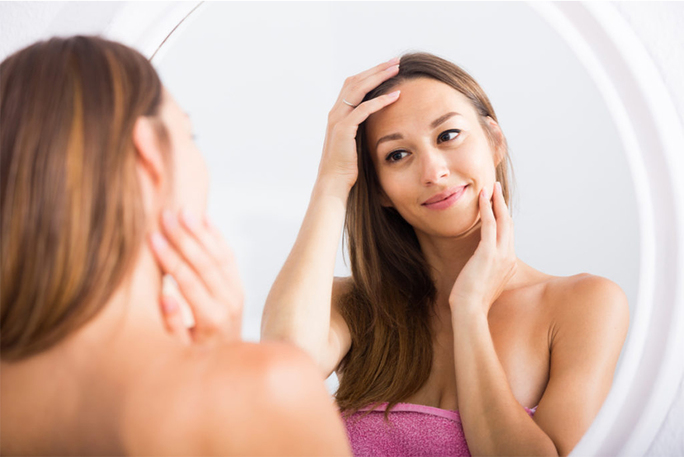In the event that you’ve at any point gone into your restroom with no expectation of picking, popping, scratching, or scratching and turn out with at least one open, draining injuries, you’re not the only one. Truth be told, the web might likely want to watch you do it.
Before you recoil from the proposal, think about the proof. We face a daily reality such that Dr. Pimple Popper, otherwise called Sandra Lee, M.D., well known for sharing her gnarliest crush fests on Instagram to the tune of about 3 million adherents (editorial manager’s note: That connection isn’t for the black out of heart!), has quite recently handled a network show on TLC. Past that, different kinds of picking and popping patterns are permeating. The most recent to circulate around the web on YouTube is scalp scratching—or picking at the pieces of skin and dandruff on your scalp with the utmost attention to detail—a training with which numerous individuals who have psoriasis or seborrheic dermatitis are very recognizable.
The brain research of picking yourself.
The majority of this brings up the undeniable issue: Why have we turned out to be fixated on skin picking, both as an individual tic and as an observer sport?
“There is a surge of adrenaline that accompanies seeing something sickening,” Elizabeth Lombardo, Ph.D., analyst and creator of Better Than Perfect: 7 Strategies to Crush Your Inner Critic and Create a Life You Love, told ofh. “For a few, that surge can persuade viewing these recordings.” People tend to watch until the end, she stated, on the grounds that they need a feeling of fruition and achievement. Watching something “intense” and traversing it very well may be agreeable for a few.
As an observer sport, it’s most likely not too terrible for you. “[W]e realize that this won’t really cause us hurt (or critical mischief), instead of different practices,” Dr. Lombardo said. She was alluding to dermatillomania and trichotillomania, which are delegated clinical hypochondrias of over the top skin picking and hair pulling, separately.
All encompassing esthetician, wellbeing mentor, and ofh Collective part Britta Plug, whose new all encompassing facial and health space simply opened in New York City’s SoHo neighborhood, has assisted a portion of her customers in their battle and adventure with dermatillomania. “It’s tension based,” Plug said. “What happens is individuals, particularly when they’re on edge, focused, or feeling terrible about themselves, wind up before the mirror, and they simply begin. It is anything but a cognizant choice for some, and before they know it, they’ve broken skin and caused dying.”
For a few, picking recordings are activating—badly.
One such customer of Plug’s is Ross Erin Martineau, a closet beautician and yoga instructor living in Brooklyn. While she’s never been clinically determined to have dermatillomania, she’s been determined to have wretchedness and nervousness, which regularly oblige it. Ross met with a skin mentor whose whole practice is devoted to helping her customers stop picking, took part in help bunches particularly for the condition, and swings to her yoga rehearse all for the sake of holding her skin-picking under tight restraints.
“I simply need to not draw in that piece of my cerebrum and discover another arrangement that has nothing to do with picking,” she said. “It’s likely best not to watch those recordings.”
On the off chance that you have a feeling that you’re picking excessively, here’s the manner by which to stop.
1. Ride out the pine for wave.
As indicated by Dr. Lombardo, it’s tied in with assuming that the on edge desire to pick will pass. “Like conquering any impulse, the way to ceasing is to understand that any tension that accompanies not picking will in the end die down,” she said. “At first, it might feel distressing, expanding the inclination to pick, yet on the off chance that you hold up sufficiently long, that uneasiness will level and inevitably diminish.” If you “give in” and pick amid the tallness of your hankering, in any case, she said it will “just make it harder to stop the propensity.”
2. Occupy sit still, meandering hands.
Ross says that squirm toys are enormous in the dermatillomania and trichotillomania networks since they keep sit out of gear hands occupied. She’s utilized whirly gigs and other squirm toys when she sees she’s contacting her face and “filtering” for spots to pop.
3. Make an obstruction.
Fitting’s associate and esthetician Susana Salazar once had a customer who battled with overpicking, so she’d put jalapeño squeeze on her customer’s fingers so reaching open skin stung—and it worked! Her customer quit picking. Ross has utilized gloves, which can be a useful physical (and less difficult) update that your face can feel. Others tape their fingers for a comparable impact.
4. Breath work.
Ross is highly involved with preparing to end up a yoga educator, which has been useful for handling the underlying driver of picking: tension. “I truly require contemplation and yoga to feel OK,” she said. “Furthermore, on a more profound level, the skin-picking is an appearance of wretchedness, uneasiness, self-hatred. I need to retrain my mind out of that stuff.”
